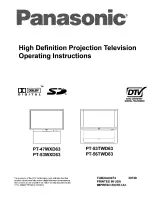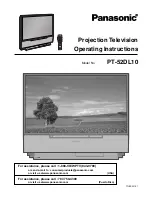
EMERGENCY RESPONSE
SWIMS
for Radiological and Other Emergencies
Only under extreme radiological conditions such as external
radiation greater than 100 rem / hr or airborne radioactivity
concentrations greater than 100,000 DAC would the radiological
emergency take precedence over serious personnel injuries.
Hazardous conditions such as atmospheres that are IDLH
would require you to implement controls to protect the
emergency responders. Therefore, you would not attempt to
move a seriously injured person before medical personnel
arrived unless the radiological or other hazardous condition
presented a greater danger to that person and yourself.
S
top or
S
ecure operations in the area. If applicable, secure the
operation causing the emergency.
W
arn others in the area as you are evacuating. Do not search
for potentially missing personnel at this stage of the emergency.
I
solate the source of the radiation or radioactivity or other
contaminant or hazard only if you understand the operation and
are qualified to isolate the source.
M
inimize individual exposure and contamination. Control the
entry points to the area if possible.
S
ecure unfiltered ventilation. Evaluate the radiological or other
hazardous condition and advise facility personnel on ventilation
control.
2
EMERGENCY RESPONSE
SWIMS
for Radiological and Other Emergencies
Only under extreme radiological conditions such as external
radiation greater than 100 rem / hr or airborne radioactivity
concentrations greater than 100,000 DAC would the radiological
emergency take precedence over serious personnel injuries.
Hazardous conditions such as atmospheres that are IDLH
would require you to implement controls to protect the
emergency responders. Therefore, you would not attempt to
move a seriously injured person before medical personnel
arrived unless the radiological or other hazardous condition
presented a greater danger to that person and yourself.
S
top or
S
ecure operations in the area. If applicable, secure the
operation causing the emergency.
W
arn others in the area as you are evacuating. Do not search
for potentially missing personnel at this stage of the emergency.
I
solate the source of the radiation or radioactivity or other
contaminant or hazard only if you understand the operation and
are qualified to isolate the source.
M
inimize individual exposure and contamination. Control the
entry points to the area if possible.
S
ecure unfiltered ventilation. Evaluate the radiological or other
hazardous condition and advise facility personnel on ventilation
control.
2
EMERGENCY RESPONSE
SWIMS
for Radiological and Other Emergencies
Only under extreme radiological conditions such as external
radiation greater than 100 rem / hr or airborne radioactivity
concentrations greater than 100,000 DAC would the radiological
emergency take precedence over serious personnel injuries.
Hazardous conditions such as atmospheres that are IDLH
would require you to implement controls to protect the
emergency responders. Therefore, you would not attempt to
move a seriously injured person before medical personnel
arrived unless the radiological or other hazardous condition
presented a greater danger to that person and yourself.
S
top or
S
ecure operations in the area. If applicable, secure the
operation causing the emergency.
W
arn others in the area as you are evacuating. Do not search
for potentially missing personnel at this stage of the emergency.
I
solate the source of the radiation or radioactivity or other
contaminant or hazard only if you understand the operation and
are qualified to isolate the source.
M
inimize individual exposure and contamination. Control the
entry points to the area if possible.
S
ecure unfiltered ventilation. Evaluate the radiological or other
hazardous condition and advise facility personnel on ventilation
control.
2
EMERGENCY RESPONSE
SWIMS
for Radiological and Other Emergencies
Only under extreme radiological conditions such as external
radiation greater than 100 rem / hr or airborne radioactivity
concentrations greater than 100,000 DAC would the radiological
emergency take precedence over serious personnel injuries.
Hazardous conditions such as atmospheres that are IDLH
would require you to implement controls to protect the
emergency responders. Therefore, you would not attempt to
move a seriously injured person before medical personnel
arrived unless the radiological or other hazardous condition
presented a greater danger to that person and yourself.
S
top or
S
ecure operations in the area. If applicable, secure the
operation causing the emergency.
W
arn others in the area as you are evacuating. Do not search
for potentially missing personnel at this stage of the emergency.
I
solate the source of the radiation or radioactivity or other
contaminant or hazard only if you understand the operation and
are qualified to isolate the source.
M
inimize individual exposure and contamination. Control the
entry points to the area if possible.
S
ecure unfiltered ventilation. Evaluate the radiological or other
hazardous condition and advise facility personnel on ventilation
control.
2














































